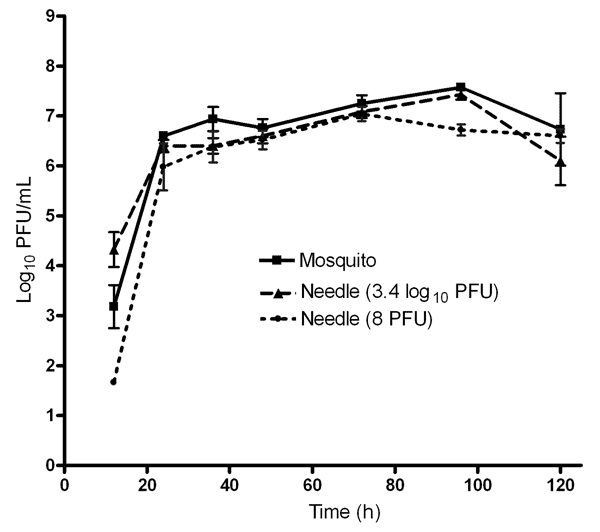Volume 12, Number 8—August 2006
Research
Venezuelan Equine Encephalitis Virus Transmission and Effect on Pathogenesis
Figure 3

Figure 3. Viremia in mice infected by 1 mosquito bite or intradermally by needle injection with 2 different doses of Venezuelan equine encephalitis virus representing the range of doses delivered during blood feeding (Figure 1). Five animals per cohort were bled at each time point. Error bars indicate standard deviations.
Page created: December 09, 2011
Page updated: December 09, 2011
Page reviewed: December 09, 2011
The conclusions, findings, and opinions expressed by authors contributing to this journal do not necessarily reflect the official position of the U.S. Department of Health and Human Services, the Public Health Service, the Centers for Disease Control and Prevention, or the authors' affiliated institutions. Use of trade names is for identification only and does not imply endorsement by any of the groups named above.